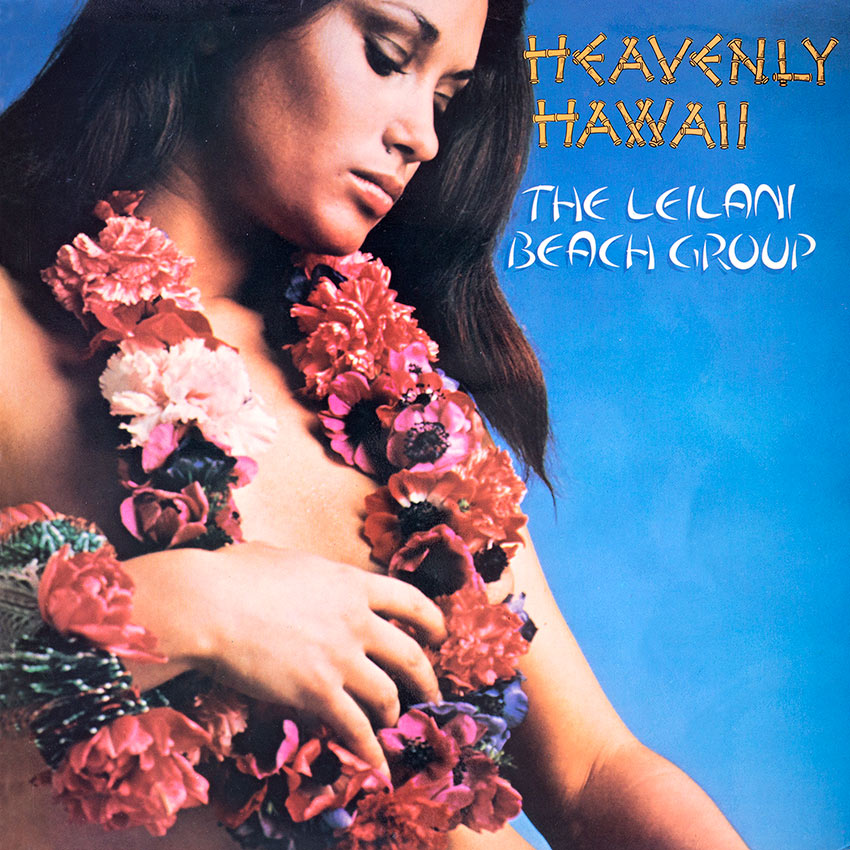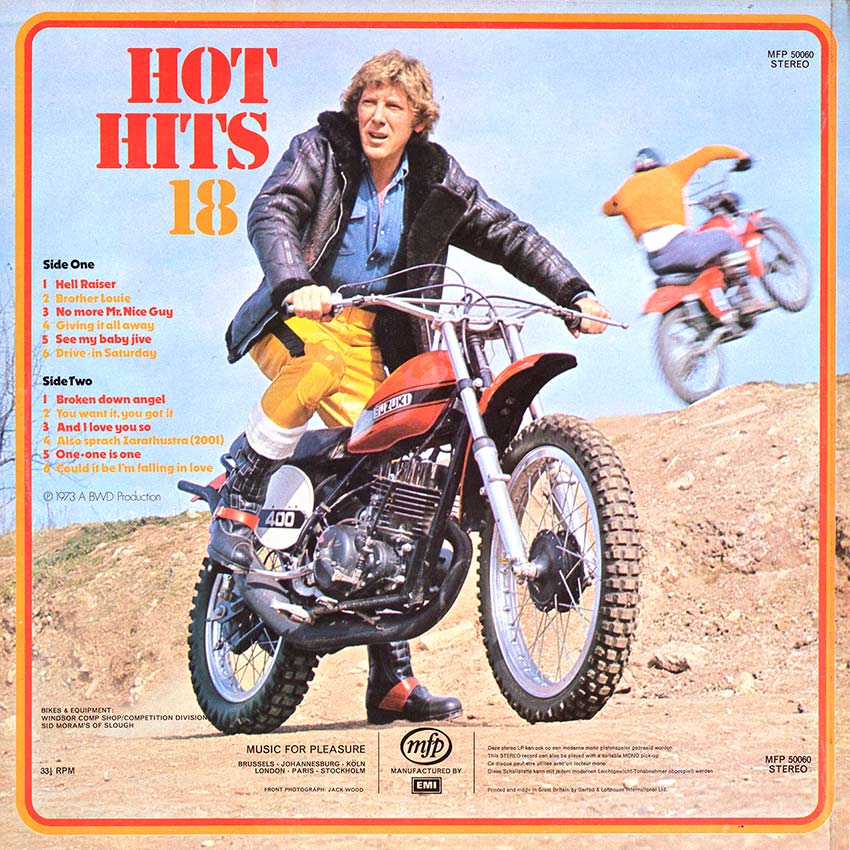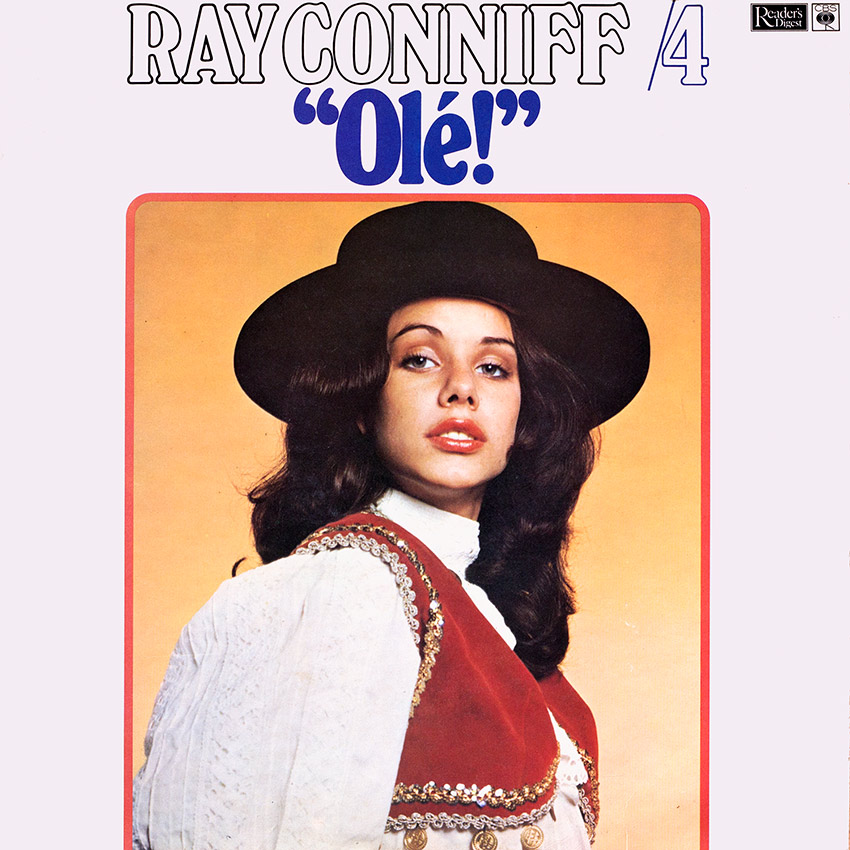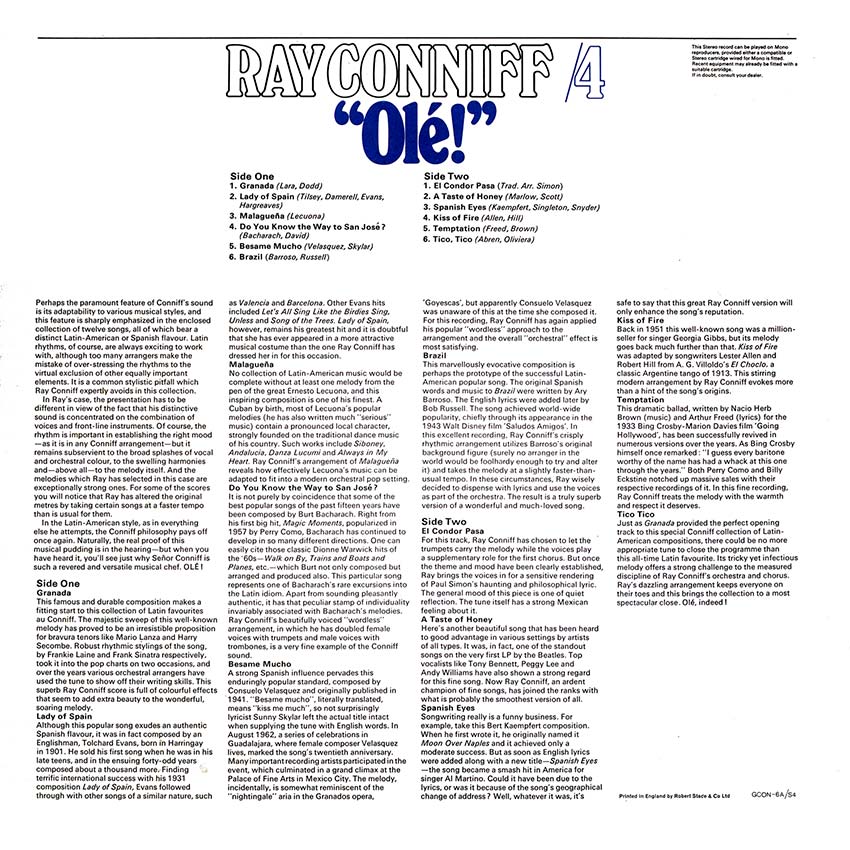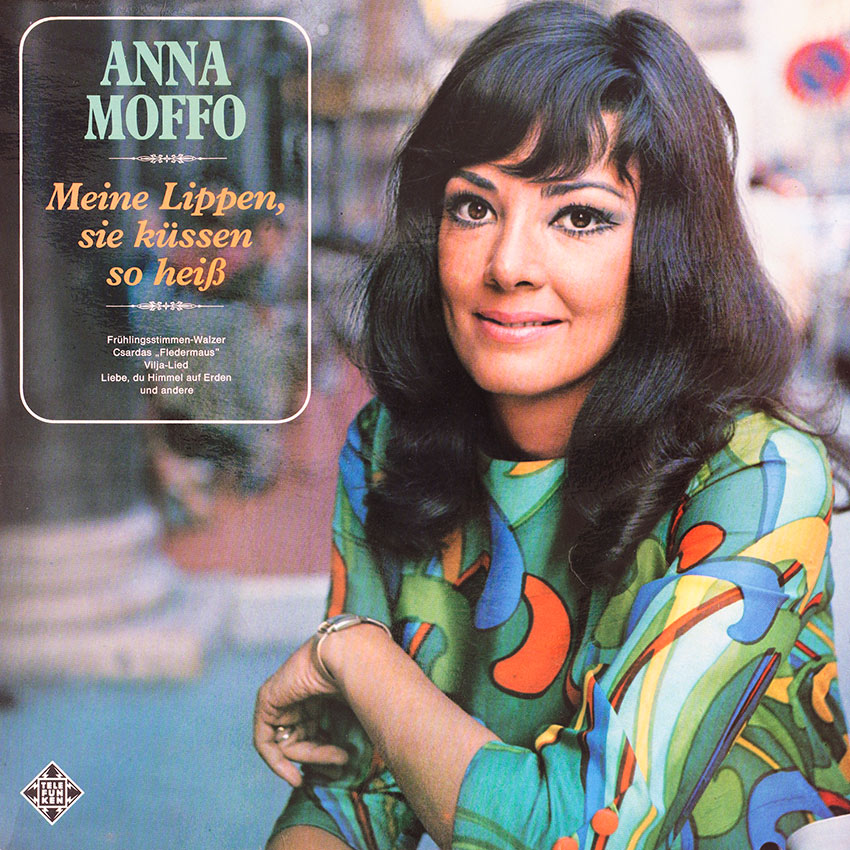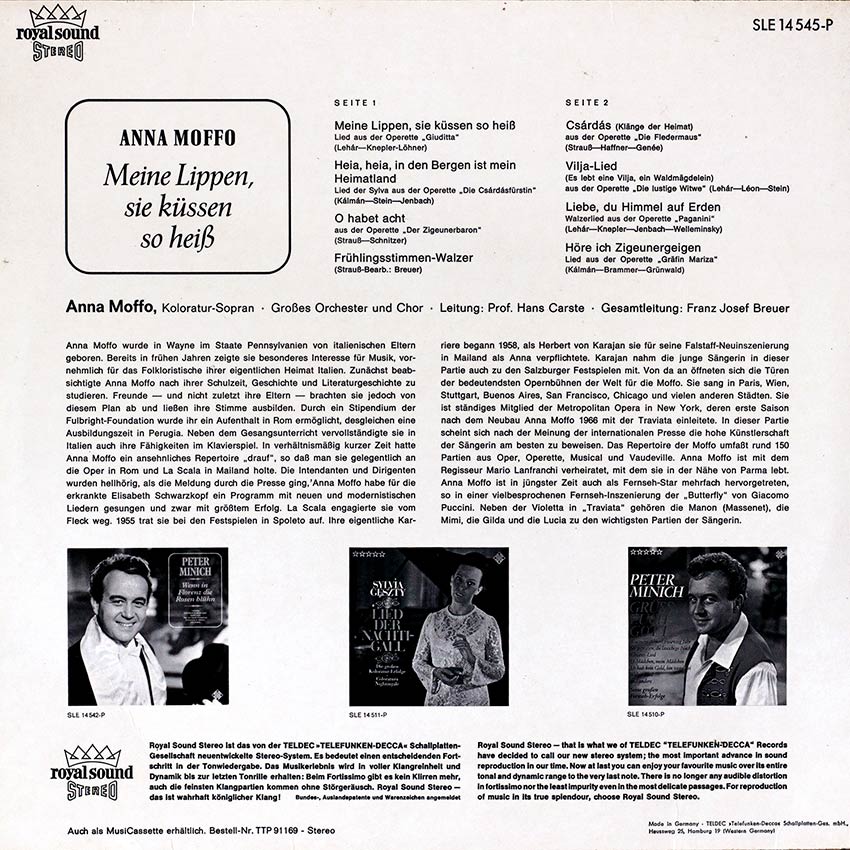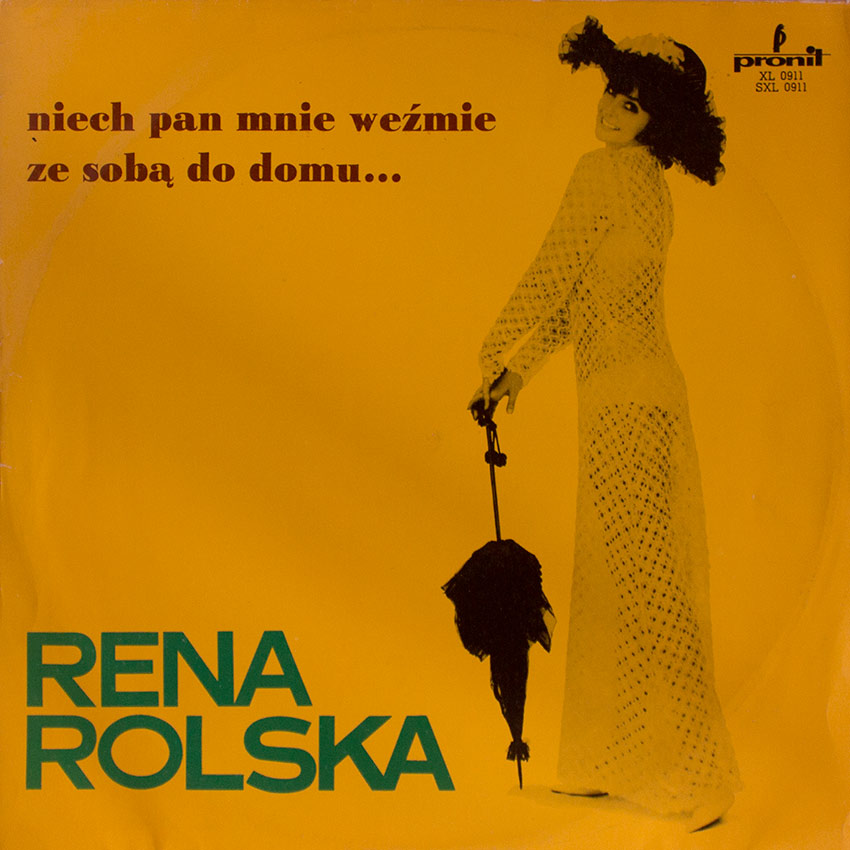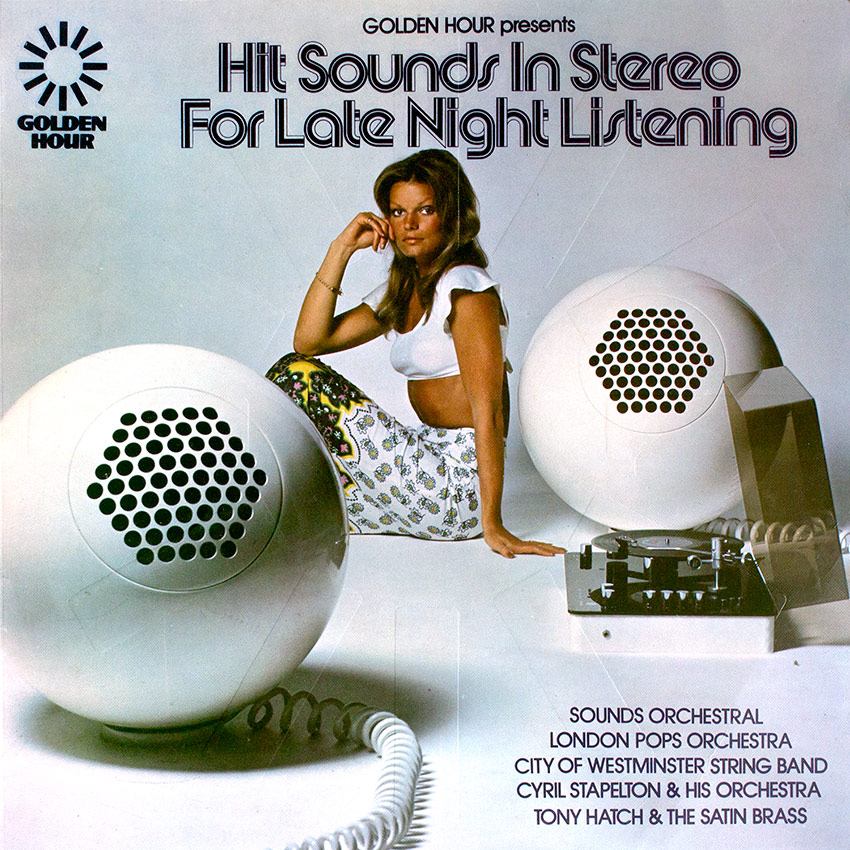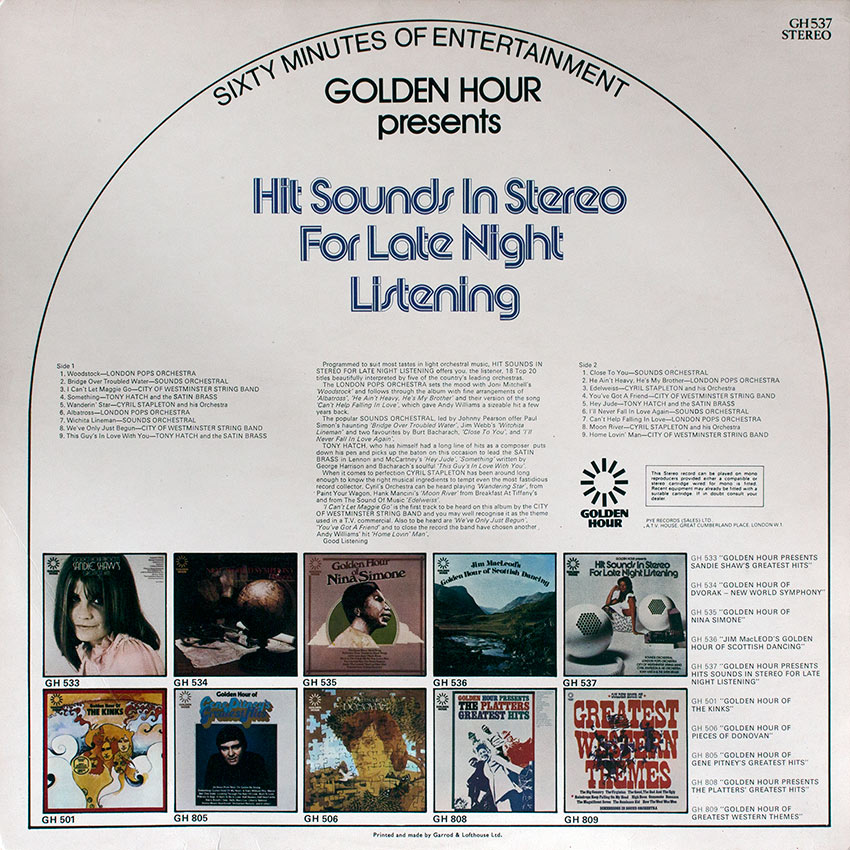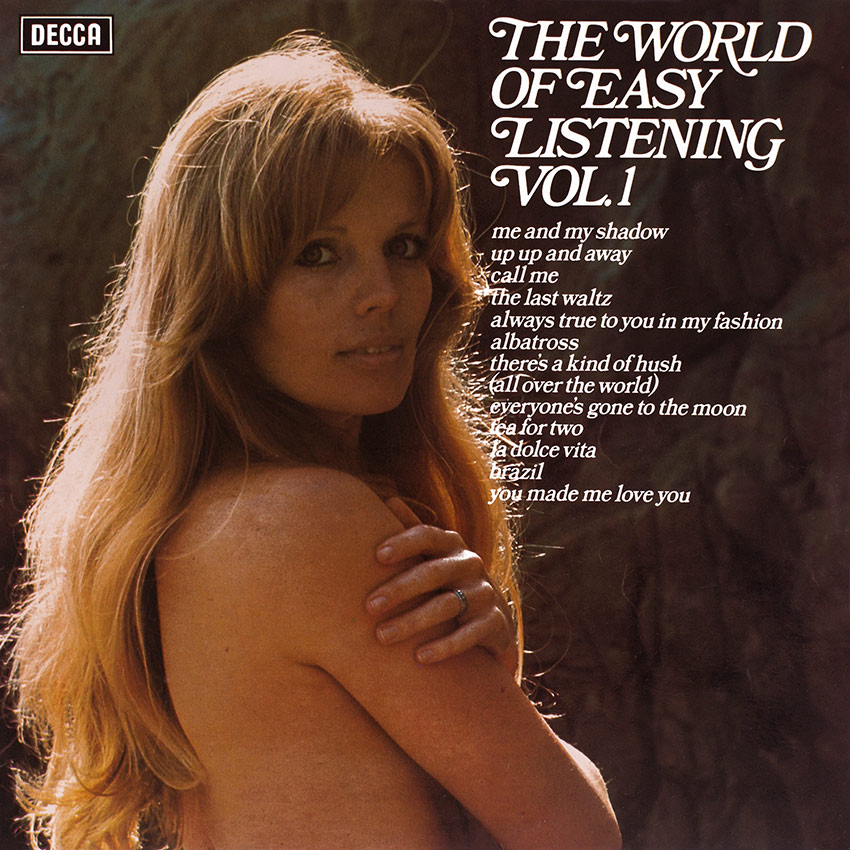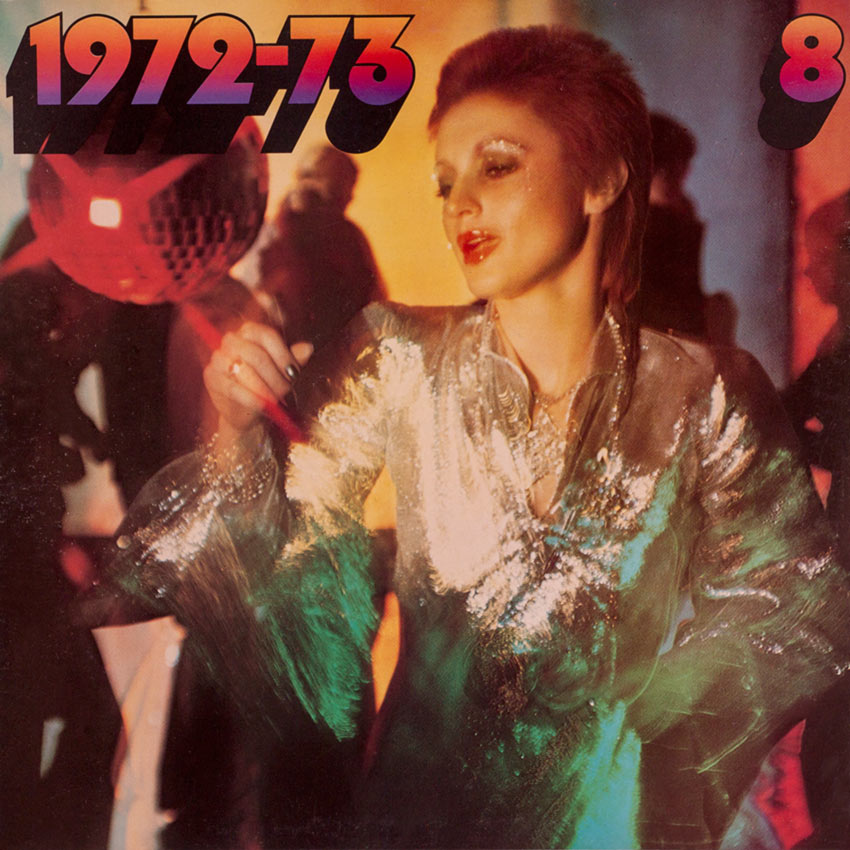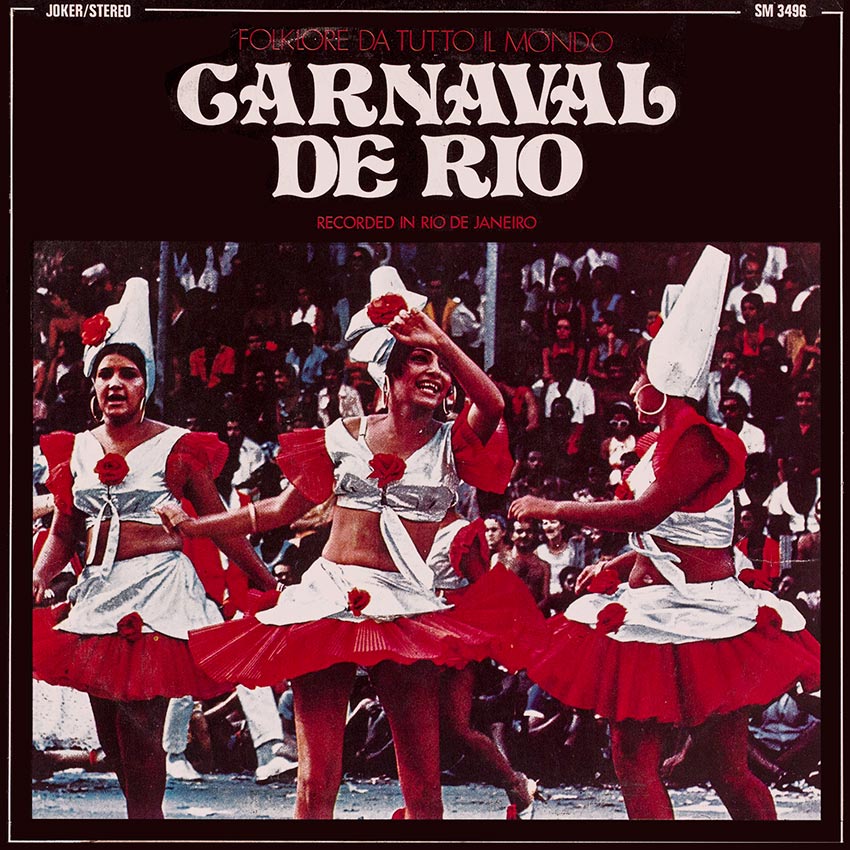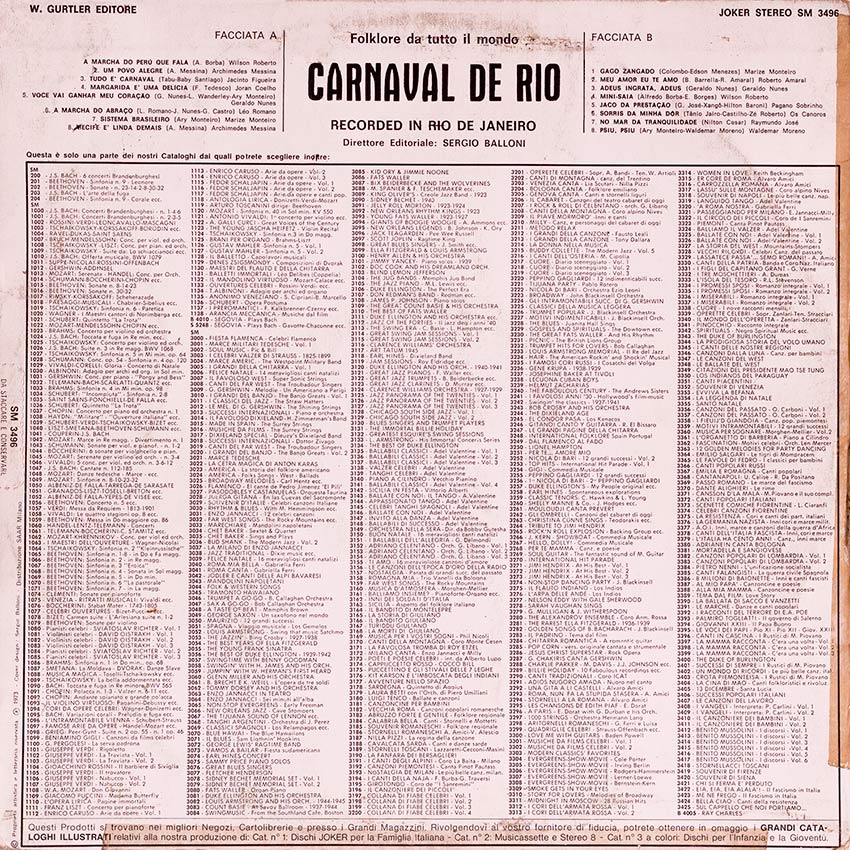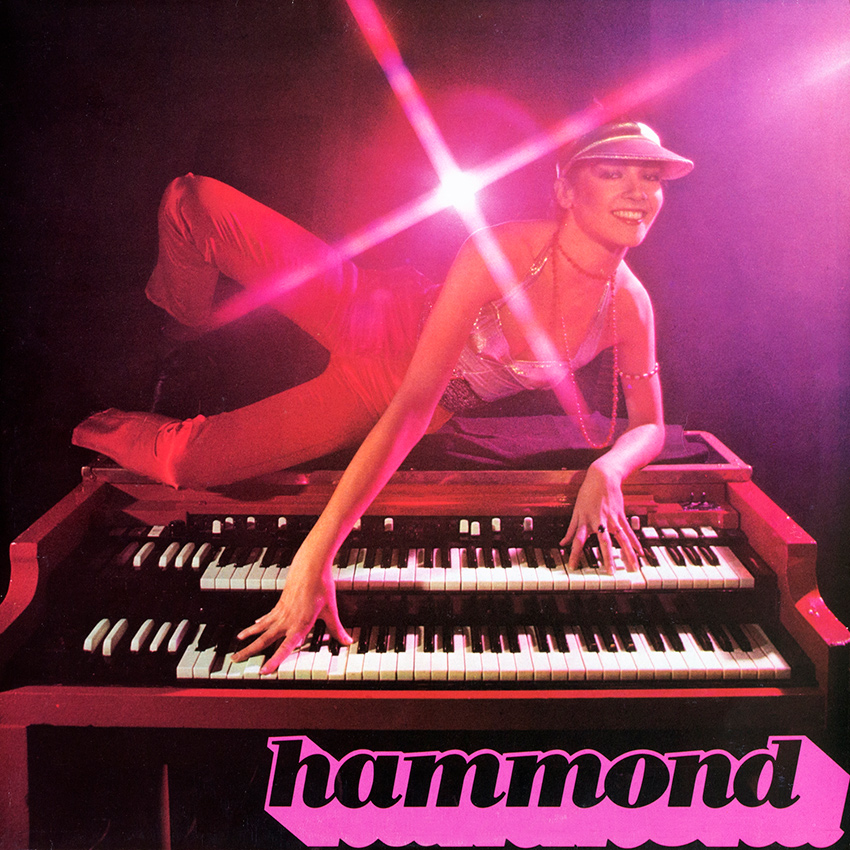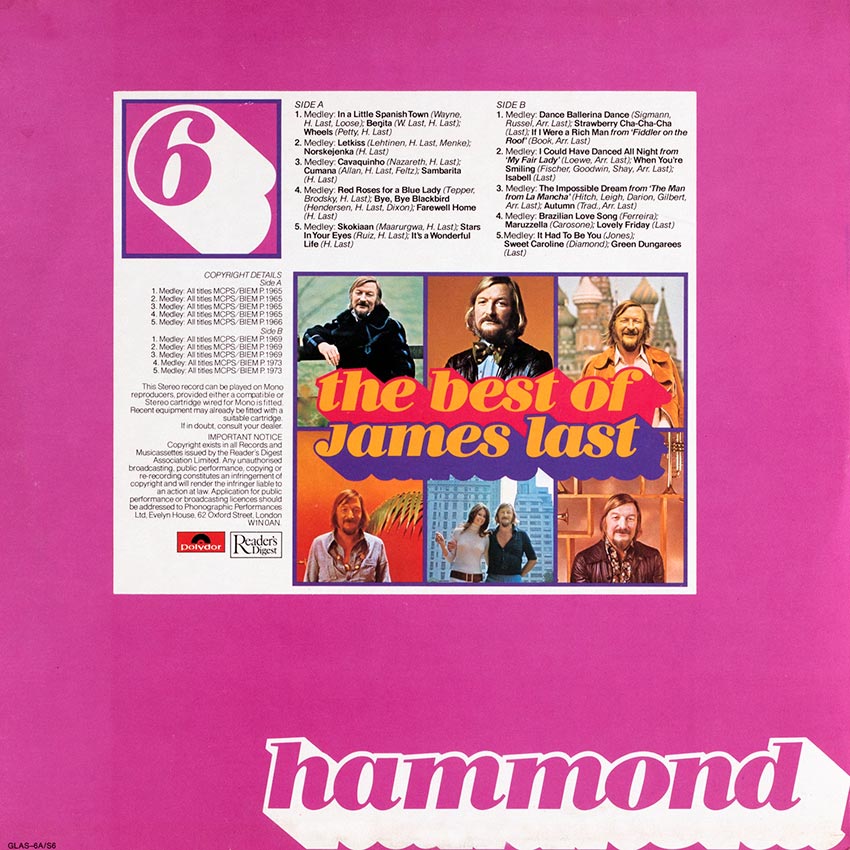Part of a Reader’s Digest box set of records featuring original recordings from the 50s to the early 70s.
But, then, Son of My Father sold over 2,000,000 worldwide and was the fourth biggest-selling record in the U.K. during 1972.
Without You Harry Nilsson
Chart Entry:19-2-72/Stayed: 13 weeks/Highest Position: 1 Harry Nilsson is something of an enigma in today’s pop world. A singer-songwriter who works in a very contemporary vein, yet whose style reflects a delightfully old-fashioned approach. Ray Charles was the inspiration for Nilsson, who came into music after the daily grind of trying to sell his songs at recording studios. At one of these impromptu ’demo’ performances was the legendary producer-songwriter Phil Spector. He was impressed and used two Nilsson songs for acts he was recording at the time. When he began recording there was little doubt that both as a writer and as a singer Nilsson was something out of the ordinary. But there wasn’t a great deal of public reaction to his initial efforts. The film ‘Midnight Cowboy* was the turning point. For Harry Nilsson’s version of a song by another singer-songwriter – Fred Neil – was used over the credits. The immense popularity of the film and the fine performance by Nilsson made Everybody’s Talkin’ a hit of 1970. The breakthrough meant that Nilsson was to write for films and TV specials – and other artists began using his material extensively. Without You is probably his biggest-selling single to date.
Come What May Vicky Leandros
Chart Entry: 22-4-72/Stayed: 8 weeks/Highest Position: 2 Vicky Leandros has packed a lot of action into her young life. Born on the Greek island of Corfu in 1949, she spent her childhood in Athens, grew up in Germany – where she attended the Warthenau Grammar School and the Berlitz School of Languages, majoring in English and French – and took lessons in singing, music and dancing. At 15, she made her first hit record – Messer, Gabel, Schere, Licht (Knife, Fork, Scissors, Light). In 1967. she represented Luxembourg in the Eurovision Song Contest and also toured Japan. During the latter visit she produced no less than 12 TV shows, plus more than one LP, and held three press conferences. This diminutive, dark-haired, browneyed beauty, who has had so many awards from so many different countries, finally made her mark as a top star in Britain with her recording of Come What May. And it was with this song that Vicky Leandros endeared herself to millions more by helping to make it a popular winner of the 1972 Eurovision Song Contest.
Rocket Man Elton John
Chart Entry: 6-5-721 Stayed: 8 weeks/Highest Position: 2 If one had to pick the one pop artist who has made the greatest single contribution to the pop music of the 1970s, it would have to be Elton John. The former Reg Dwight – singer, pianist, organist, composer – has reached a pinnacle of artistic achievement matched by few other artists. But however famous or rich Elton John might be now, he’s certainly worked hard over many years for this success. Music has always been an integral part of Elton John – once a part-time student for five years at the Royal Academy of Music. When rock *n* roll and the blues beckoned, he played R&B with Bluesology – backing such notable solo performers along the way as Wilson Pickett and Major Lance. After meeting Lancastrian lyric-writer Bernie Taupin. his already-active songwriting talent really
came to light. Following a lack of success with a couple of pop singles on other labels, he was signed by the fledgling DJM label. Elton John’s first album – Empty Sky’ – was greeted with tremendous enthusiasm by the critics. Since then, his recordings have sold prodigiously. Rocket Man has a typical Elton John beginning – just his voice and piano to set the mood – and his compelling vocal performance ranks with his very best.
Mouldy Old Dough Lieutenant Pigeon
Chart Entry: 23-9-72/Stayed: 11 weeks/Highest Position: 1 Mouldy Old Dough is one of those odd, delightfully awful records that make the Hit Parade from time to time. Appropriately. Lieutenant Pigeon is also out-of-the- ordinary. The two leading lights in the group are drummer Nigel Fletcher and pianist Rob Woodward, who cocomposed this strange hit tune. And it is Fletcher who is also responsible for the quite unbelievable ‘singing’ on Mouldy Old Dough. Apart from Woodward and Fletcher, the line-up includes bassist Steve Johnson and second pianist Hilda Woodward, who just happens to be Rob’s mother! She holds a certificate from the London College of Music, dating back to 1936, and still has a regular list of piano students … one of whom, some time back, was son Rob. To finish this stranger-than-fiction story of a pop group (and its monster hit) Mouldy Old Dough was actually recorded in Mother Woodward’s front room at the family residence in Coventry!
You’re a Lady Peter Skellern
Chart Entry: 30-9-72/Stayed: 7 weeks/Highest Position: 3 The elevation of this song into the British charts showed that the ballad in pop music has a lasting quality. Peter Skellern, the composer of the gently wistful You’re a Lady. writes songs which, apart from the romanticism of this track, range from the vaudevillian through the cynical to the witty. He can surprise you in the nicest ways – as recourse to his first LPs ’You’re a Lady’ and ’Not Without a Friend’ will show. Whoever had the brilliant idea of using the complete Hanwell Brass Band as a most unexpected background for You’re a Lady deserves a special medal. Skellern’s light, narrator-like singing voice projects the simple lyric with great sincerity. All in all, a tremendously effective start for this friendly North Countryman who has since more than lived up to the promise he showed with this recording.
I’d Like To Teach the World To Sing The New Seekers
Chart Entry: 25-12-72/Stayed: 14 weeks/Highest Position: 1 The New Seekers stayed together from 1969 to 1974, when the five members decided it was time to call a halt. It says much for the musical as well as personal camaraderie of The New Seekers, that in their five-year existence there was only one personnel change: Peter Oliver replaced Peter Doyle in June 1973. Peter Doyle, an Australian, started cabaret work at 14, later singing with several rock groups, and recording as a solo artist. Eve Graham and Lyn Paul were the two lovely ladies of The New Seekers. Eve was a hairdresser before she joined Lyn as a member of the Manchester-based Nocturnes. She came to London as featured singer with the Cyril Stapleton Band. Lyn Paul started learning tap and ballet at three and had her TV debut in 1961, in ’Coronation Street’. She is now a successful solo singer in her own right. Marty Kristian – born in Germany, the son of Latvian parents – was brought up in Australia. He travelled free to Britain by entertaining ship’s passengers. Paul Layton plays bass, piano and guitar and has studied drama, music and acting. I’d Like To Teach the World To Sing was originally written as a theme for an internationally successful Coca- Cola commercial, the words being changed slightly for the Hit Parade version.
SIDE TWO
Part of the Union The Strawbs
Chart Entry: 27-1-73/Stayed: 9 weeks/Highest Position: 2 The convincing way in which Part of the Union leapt into Hit Parade prominence gladdened the hearts of those loyal fans who had followed the fortunes of The Strawbs since the very earliest days. Afterwards, though, Strawbs’
leader Dave Cousins must have viewed this success with mixed feelings. For it spelled the break-up of this particular edition of The Strawbs. Co-composers of Part of the Union, John Ford and Richard Hudson, decided to leave to form their own joint band. In many ways Part of the Union is a ’different’ recording from The Strawbs’ previous repertoire. It has nothing of the folksy quality of the early Cousins- inspired Strawbs, or even the sometimes classically orientated band of the Rick Wakeman period. It’s a straightforward, no-nonsense piece, almost a protest-type song in nature. Even though the band was soon to disperse, to re-assemble later in a completely different form, at least for Dave Cousins it was just reward for the years of hard work which had produced numerous fine albums and a host of good songs.
Sylvia Focus
Chart Entry: 10-2-73/Stayed: 6 weeks/Highest Position: 4 By the mid-1960s it was apparent that the Continent was beginning to catch up with the States in terms of producing good rock acts. The emergence at the turn of the 1970s of the Dutch band Focus was a culmination of much of the experimentalism which had occurred in the previous decade. As a musical unit. Focus are superbly equipped to tackle all kinds of material. Anything, in fact, from basic rock ’n’ roll to contemporary jazz. On this track Bert Ruiter plays bass and Pierre van der Linden is the drummer and a strong feature is the classically slanted organ work of composer Thijs van Leer, who also engages in an impressively executed piece of falsetto singing.
Yesterday Once More The Carpenters
Chart Entry: 28-7-73/Stayed: 8 weeks/Highest Position: 2 The Carpenters could well be called the No. 1 vocal group in the world today – for many reasons. Their records sell in almost unbelievable numbers. Their concert appearances are sell-outs. They are quite exceptionally talented. Karen, for a start, is the possessor of a truly beautiful singing voice – well-nigh pitch perfect – and she is a fine drummer, who still sits behind her kit for parts of her concert performances. Brother Richard started out learning to play accordion, changed to piano and became a gifted composer and arranger. He writes almost all The Carpenters’ excellent arrangements as well as singing solo and in harmony with his sister. The pair recorded their first LP for A&M Records in 1969. A track from that album – Ticket To Ride – became a big Stateside hit. Following a prestigious ’official’ debut in Los Angeles in company with Burt Bacharach, came the release of a Bacharach-penned number, Close to You. It went to No. 1 in the U.S., got into the Top Five in Britain and was the signal for some even more amazing record-selling by The Carpenters in the shape of singles like Goodbye to Love, Top of the World, and, more recently. Only Yesterday. The voice of Karen introduces Yesterday Once More, joined shortly afterwards by her brother. Their multi- tracked harmonies make lor delightful listening.
Monster Mash Bobby Pickett and The Crypt Kickers
Chart Entry: 22-9-73/Stayed: 6 weeks/Highest Position: 3 If it’s a touch of the humorous horrors you’re after, then you need go no further than this happy-sounding offering from an outfit which also released numbers like Monster Holiday (the follow-up to Monster Mash, about a ghoulish Christmas) and Graveyard Shift. Bobby Pickett and Lenny Capizzi, co-writers of Monster Mash, recorded it in 1962, and during that year it became a king-size hit in the U.S. 11 years later, it was heavily featured by an American disc jockey in a golden oldies section of his programme. The reaction was astonishing. So much so. that London Records re-issued it in the States and, in true Frankenstein style, it came to life again to become an even bigger success than before. In Britain, too, The Crypt Kickers attracted the attention of a wide audience and Monster Mash rose impressively on the Hit Parade.
Ballroom Blitz The Sweet
Chart Entry: 22-9-731Stayed: 6 weeks/Highest Position: 2 The Sweet’s basic message is: We want to keep people happy and dancing’. That this British group have managed this, with considerable success, is borne out by a string of record hits, starting early in 1971 with Funny Funny, which was the band’s first Top Ten entry. The Sweet’s extraordinary run of smash-hit successes at the beginning of its lifetime is worth recounting. After Funny Funny there was Co-Co (that went to No. 2). followed sequentially by Poppa Joe (the only non-Top Ten entry), Little Willy (4) Wig Wam Bam (4). Blockbuster (1), Hell Raiser (2) and Ballroom Blitz (2). This recording is a splendid representation of what The Sweet is all about. It’s one of those infectious, beat-filled performances – with almost Goon- like humour – which is every bit as important to the pop scene as. say, the protest song, the doom-laden ballads or the harsh angularities of some heavy rock.
Caroline Status Quo
Chart Entry: 29-9-73/Stayed: 8 weeks/Highest Position: 5 Status Quo were once described as being ‘the most sophisticated exponents of primitive rock-and-roll, bar none . ..’ That seemingly inexplicable contradiction in terms isn’t quite as far-out as it might seem. For Status Quo often have appeared to use their basically heavy-rock sound in a sophisticated way. Pictures of Matchstick Men and Ice in the Sun were the first two singles which, in 1968. put Quo on the toad to popularity. Then came Down the Dustpipe (1970) and a trio of heavy sellers from 1973 – Paper Plane, Mean Girl and Caroline. This is in itself a self-portrait of Quo. right from the all-instrumental intro., which is a superb tension-builder for the voluminous guitar sound that follows. Caroline, while showing Status Quo’s progressive-like capabilities, proves also that the band has never lost sight of the more free-and-easy kind of rock ’n’ roll of earlier days.


